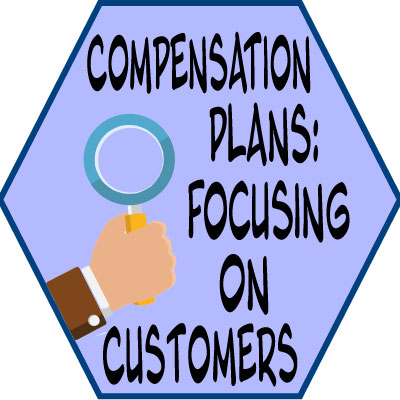This is the second in a new series of compensation plan articles, each of which will focus on one important element to be considered in the design or improvement of each and every multilevel compensation plan.
If you missed the first article or if you’d like to read it again, click Compensation Plans: Focus On Compression.
Customers are vital to the health of all businesses. Direct selling companies have two types of customers: those who are representatives of the companies themselves and those who are not.
First Things First
Your compensation plan should be designed to support your business strategies. One of your business strategies is your pricing structure.
Ask yourself and answer these three important questions:
- For the same products or services purchased, will representatives and customers who are not representatives pay the same prices or different prices?
- Will customers who are not representatives purchase your products and services at the prices you’ve set for them?
- Is your pricing structure reasonable for customers?
Customers Are Good For Business
My friend, direct selling attorney Kevin Grimes, says he knows a secret and that secret is that “customers are good for business.” He’s right, but it’s not really a secret.
Customers are also good for legal reasons because direct selling companies whose sales are made primarily to their independent representatives are at risk of FTC actions due to a lack of customers who are not representatives. The Federal Trade Commission (FTC) sued Vemma in 2015 and imposed a settlement requiring that Herbalife restructure its business in 2016.
If you don’t understand why these FTC actions should matter to you, read about the importance of real customers to learn why.
Don’t Make This Mistake
Don’t make the mistake of charging a high setup fee specifically for the purpose of paying large commissions or bonuses when a new monthly customer is enrolled.
For example, don’t offer a group of services for $100 per month, but when the customer or representative pays for their first month, a setup fee of $300 is charged as well. This poor strategic decision may tank your company because this setup fee is unreasonable in the eyes of the customer and regulators. Would you pay a fee equal to three months of service to become a customer of a company? Without the income opportunity attached, very few customers would do it.
I suggest, if you charge one at all, to make the setup fee small, at most 10-25% of the monthly fee. Why? Because that is how customers are used to being charged by other companies for setup fees when the same products or services are purchased monthly. Case in point: AT&T. Your monthly cell phone bill might be $75, while the onboarding fee is $18.
First, think about how customers with no interest in your income opportunity will respond to your pricing structure. Next, think about how regulators will view your lack of customer sales.
Recommended Strategies
Here are my recommended strategies:
- Don’t encourage people to join your company as independent representatives just for product discounts.
- Charge an enrollment fee high enough to be a representative that people don’t become representatives just for product discounts, but be sure not to pay any compensation upon the required fee.
- Don’t charge zero to be an independent rep with your company.
- Sell products or services that people will buy even if they are not earning any money through your compensation plan.
- Charge customers a fair price for your products or services.
- The price could be the same as the representative price, or it could be higher.
- Have a fully developed pricing strategy that addresses how to price for representatives and customers.
- Use sticks or carrots to increase customer sales.
- Be careful in how you incentivize sales to customers over sales to representatives or vice versa.
If you’re in need of help with your strategies for your compensation plan to motivate and reward customer acquisition or customer retention, contact me and we’ll talk confidentially about your situation.


 Jay Leisner, the President of Sylvina Consulting, is a top compensation plan and direct selling expert, a trusted adviser to new and established network marketing and party plan companies. For more than 30 years, Jay has enjoyed assessing and improving network marketing, party plan and referral marketing companies across the globe.
Jay Leisner, the President of Sylvina Consulting, is a top compensation plan and direct selling expert, a trusted adviser to new and established network marketing and party plan companies. For more than 30 years, Jay has enjoyed assessing and improving network marketing, party plan and referral marketing companies across the globe.
Leave a Reply